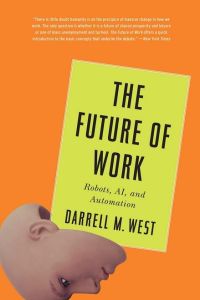Darrell M. West – director of the Center for Technology Innovation at the Brookings Institution – offers a succinct review of current trends, forecasts a future in which fewer people will work and explores the impact on society. Business, transportation and medicine are already using robotics, AI and the Internet of Things to redefine work and finance, obsoleting many of today’s jobs. Revising the social safety net requires innovation to protect workers’ economic security in uncertain times.
Accelerating technological innovation disrupts the job market and people’s routines.
At the turn of the 20th century, the United States underwent tremendous economic and technological change. Transitioning from an agrarian to an industrial economy created disruptions, and leaders worked for decades to prevent new business models and policies from prolonging social upheaval. At the start of the 21st century, America faces another massive transition: from an industrial to a digital economy. Facing a society polarized by inequality and poor governance, the country risks squandering opportunities to revise the social contract and redefine work.
Automation with robots threatens jobs in low-paying sectors such as retail, food service and truck driving. In just one year – 2015 to 2016 – robot sales doubled to 10 million units worldwide. Costs per unit dropped as robots became an affordable choice, especially given their efficiency and reliability. Increasing low-skilled workers’ minimum wage will drive the cost differential wider, putting many jobs at risk of full automation.
Some critics lament the slow maturation of the digital age. In...
Darrell M. West is the director of the Center for Technology Innovation at the Brookings Institution and editor in chief of the Brookings tech policy blog TechTank. He has authored or co-authored 24 books including Divided Politics, Divided Nation; Megachange and Going Mobile.






























Comment on this summary